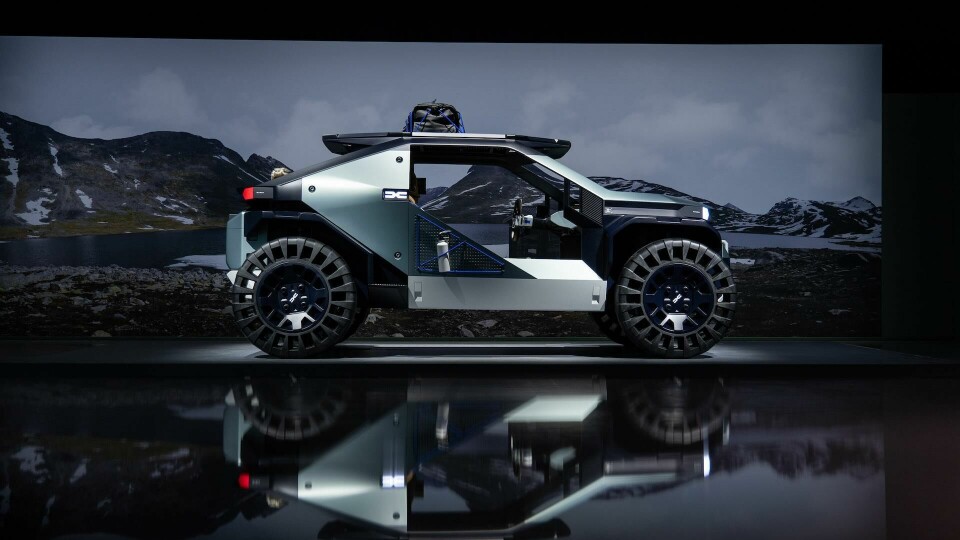
Interior Motives: Dacia Manifesto
Dacia has torn up the rulebook with its latest concept. Originally a thought experiment for the company’s brand values, the Manifesto project quickly snowballed into concept that was driven from the inside out
There is some exciting work coming out of Paris, but perhaps not from the brand you’d initially expect. Renault’s sister brand Dacia recently revealed the Manifesto, a balls-to-the-wall concept that does away with doors and windows and revels in the great outdoors.
The team managed an astonishing body of work in the space of just six months, moving twice as fast as usual to put together a concept like this. Airless tyres, exterior cargo mounts and a single headlight capture the eye immediately. This is no normal Dacia. But look past the radical exterior and it is inside the cabin where things get really interesting.
Not your normal SUV
The concept may look like a lunar rover, but it is in fact inspired by adventure motorcycles. These are go anywhere, do anything vehicles with no shelter from the outside elements. To channel this in a four-wheeler, the team experimented with new materials and layouts. The interior is fully waterproof and can be easily hosed down. There are just two seats, each featuring padded covers that look as though they could double as duffle coats but are in fact removable sleeping bags.
Those deep bucket seats are separated by an industrial-looking centre console which sports the gear selector, start-stop button and hazard light switch.
The IP doubles as a cork board and brightly coloured textile straps and pull handles are dotted throughout the cabin, presumably to tie down items that might otherwise fall out. It is all rather analogue – more like a rally car or agricultural vehicle than a car. Even the switchgear is thick and chunky, the idea being that it can be easily used in harsh weather.
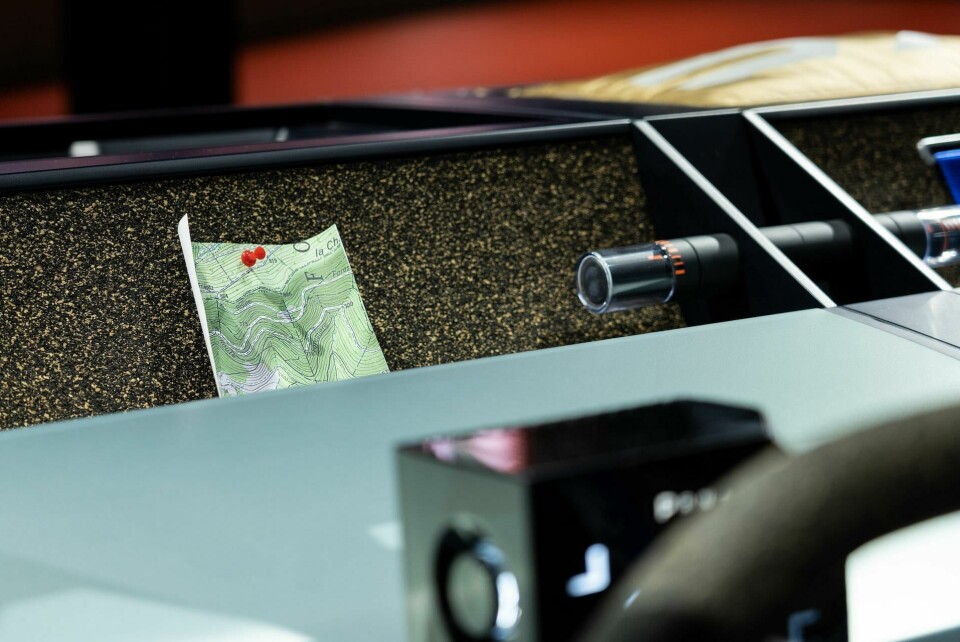
“I told the designers to imagine that people would wear gloves (and not the fancy kind) when driving this car,” says Romain Gauvin, chief designer, advanced design and concept cars at Dacia. “But in a broader sense, ease of use is a clear Dacia USP. That and robustness. Mix the two and you have the reason why every button and lever is designed in a self-explanatory way with sturdy proportions.”
Gauvin draws parallels to other cases of utilitarian product design. “When I think of Dacia switchgear, I think of rugged reflex cameras where the shutter button leaves no doubt as to what it is supposed to do,” Gauvin continues, “so the user can focus on what he is doing rather than on the car itself.”
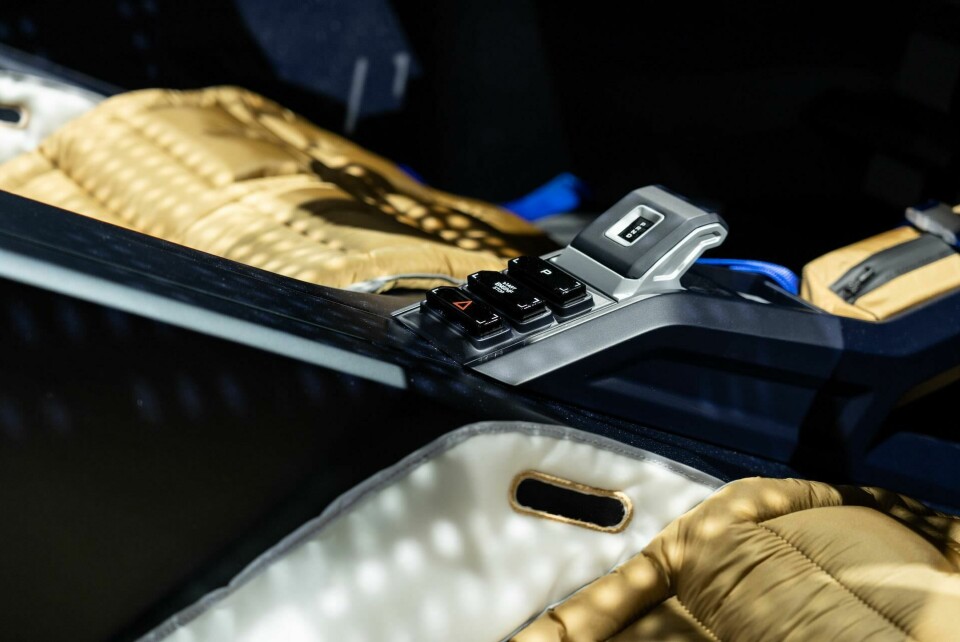
Reflecting on his favourite element of the interior, Guavin points to the pinboard on the dash, an unexpected inclusion but it doesn’t feel out of place. “I’m quite proud of this,” he says. “Getting rid of the screen and pinning a map or a note instead is a very powerful statement, both philosophically and ecologically. It brings a smile to peoples’ faces every time I present the Manifesto, and that makes me smile too.”
In stark contrast to all this, the octagonal steering wheel is far more futuristic with bright white lights illuminating controls located within easy thumb reach. Behind it sits a digital instrument cluster that perches on the dash, with two large storage bins located where the windscreen would usually connect.
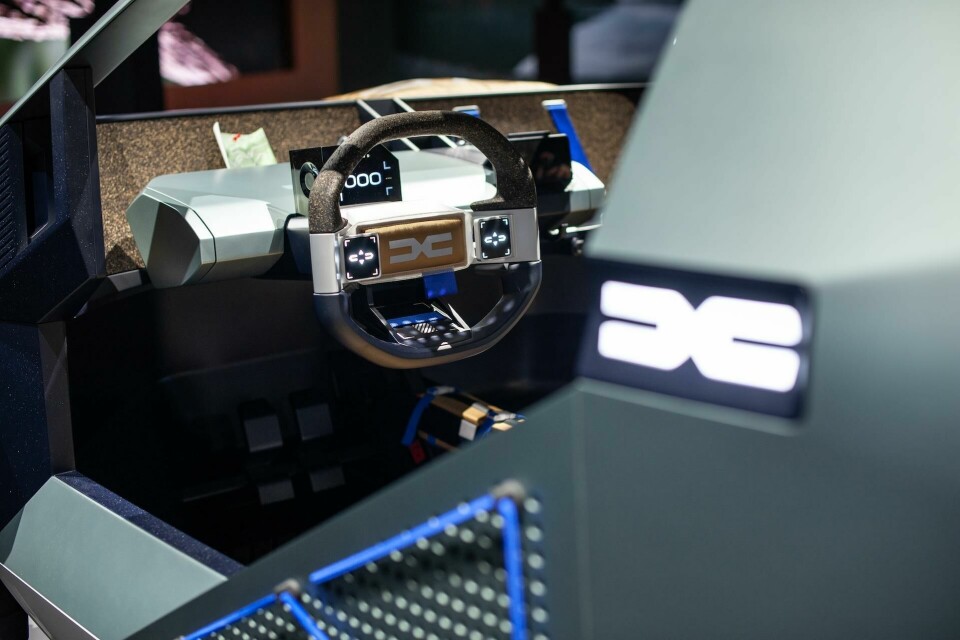
Another two sit behind the headrests, no doubt intended for camping gear or emergency items such as snacks. Creature comforts are kept to a minimum – there’s no pillar-to-pillar touchscreen or massage seats on offer.
Inside out
Just as a modern kitchen extension aims to blend indoor and outdoor living, there is a clear cohesion between the interior and exterior of the Manifesto. And you’d hope as such because everything inside is on display. “We had exterior proposals with more conventional bodysides, less exposed if you will. But it was because we felt confident with the interior that we pushed for the exterior to be fully open,” explains Gauvin.
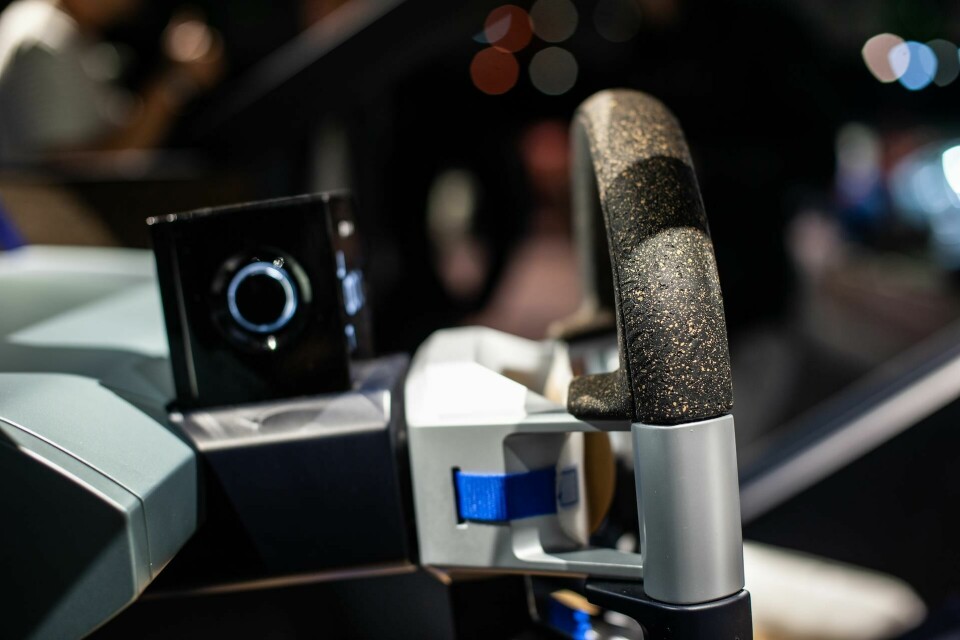
“After that we focused a lot on balance because the interior and exterior were always going to be visible at the same time. We had to ensure both had a proper character yet live together in harmony.” The exterior, he says, communicates “robustness and efficiency with hard surfaces and simple geometry, while the interior brings contrast with a visually comfy seat – padded and quilted like a comforting blanket.”
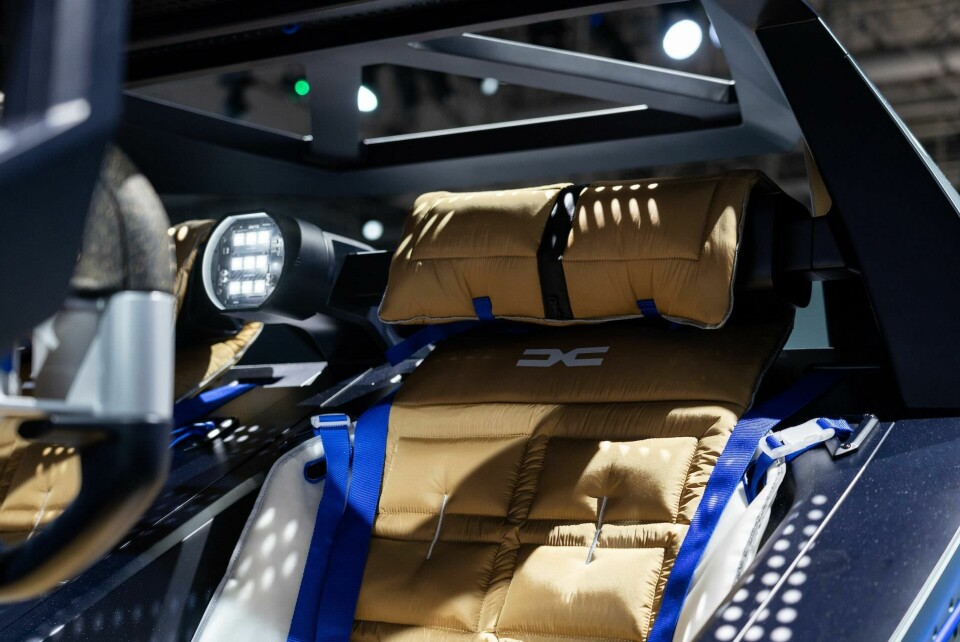
An attractive mix of sage green and mustard yellow with royal blue accents runs throughout, injecting another contemporary element to what is otherwise a spartan package. Plastic surfaces contain primarily recycled material, dubbed Starkle, which gives pre-used polypropylene a second life. This material decorates the IP and steering wheel with an attractive terrazzo pattern.
Starkle started life with the Bigster concept and we are told that it will eventually carry through to future production models. A modular clipping system – which allows different devices and accessories to be hooked up in different areas of the interior, such as a flashlight – will also make it into production. Cork is used elsewhere in the interior and any decorative chrome plating has been scrapped.
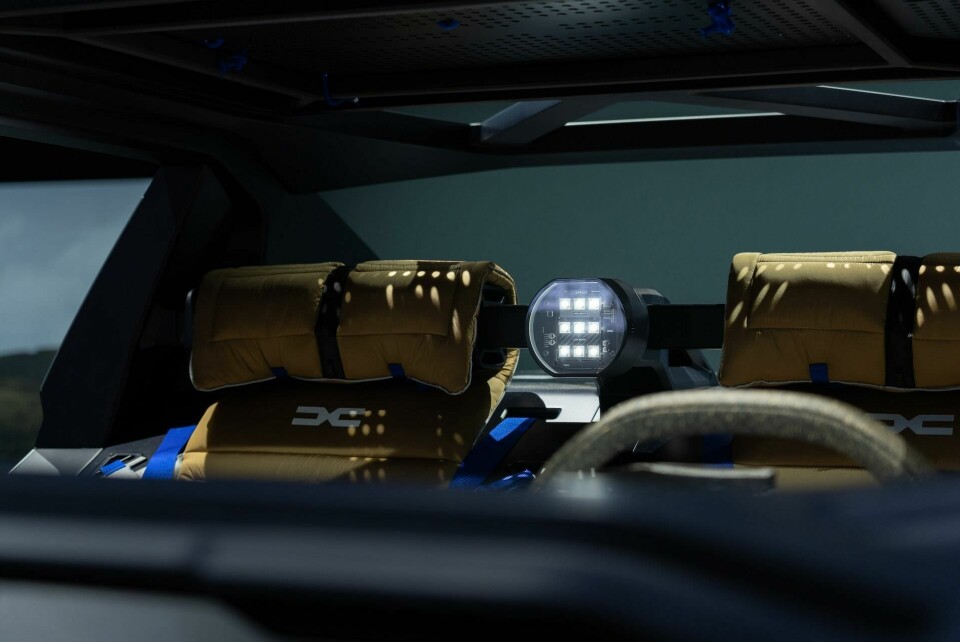
Given the advances in technology and styling that have been made in today’s industry, it feels odd to champion something as unassuming as a seat cover. But in the Manifesto, those removable sleeping bags perhaps steal the show. “At the core there is this idea that in a Dacia there is always more than meets the eye. Some elements can look quite trivial at first glance, but actually have clever additional functionality,” Gauvin explains.
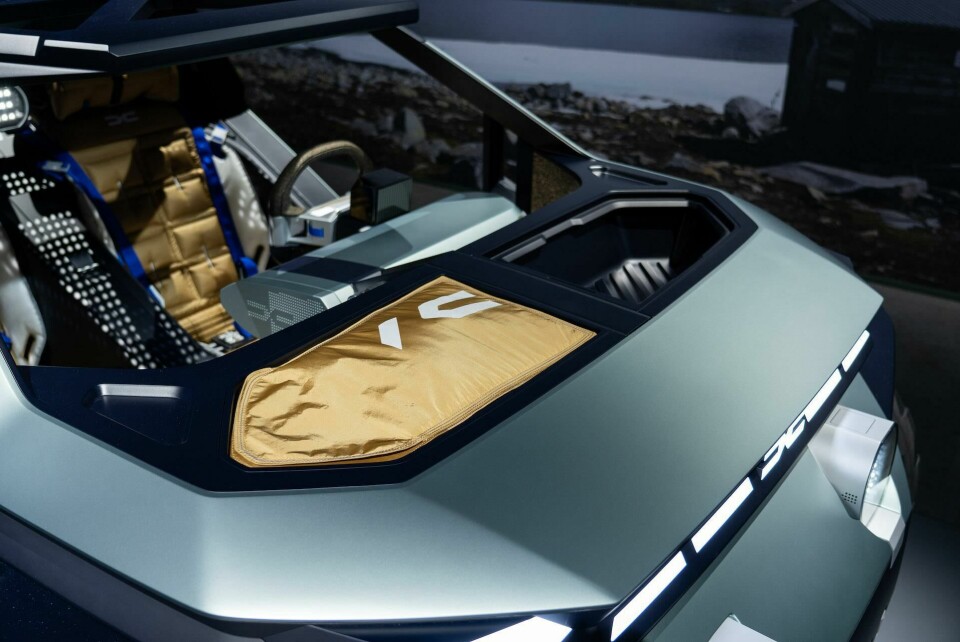
“We initially asked ‘what could a cool outdoor seat look like’ and considered whether we could turn the cover into a sleeping bag. We already had proper padding; it is roughly the right dimension, and we can make use of it at night rather than have it idle in the car. One item, two functions, less weight, less resources. It made total sense to us.”
Don’t expect to see a doorless Dacia on sale any time soon, but this is a company that is clearly looking to embrace its outdoorsy, adventure-driven values.













